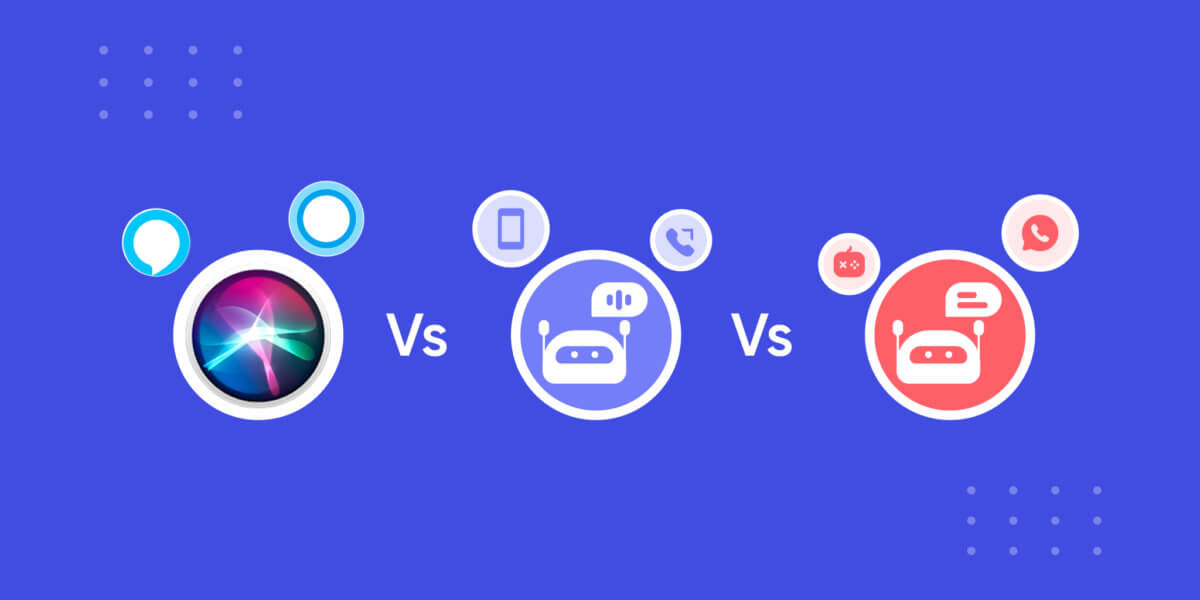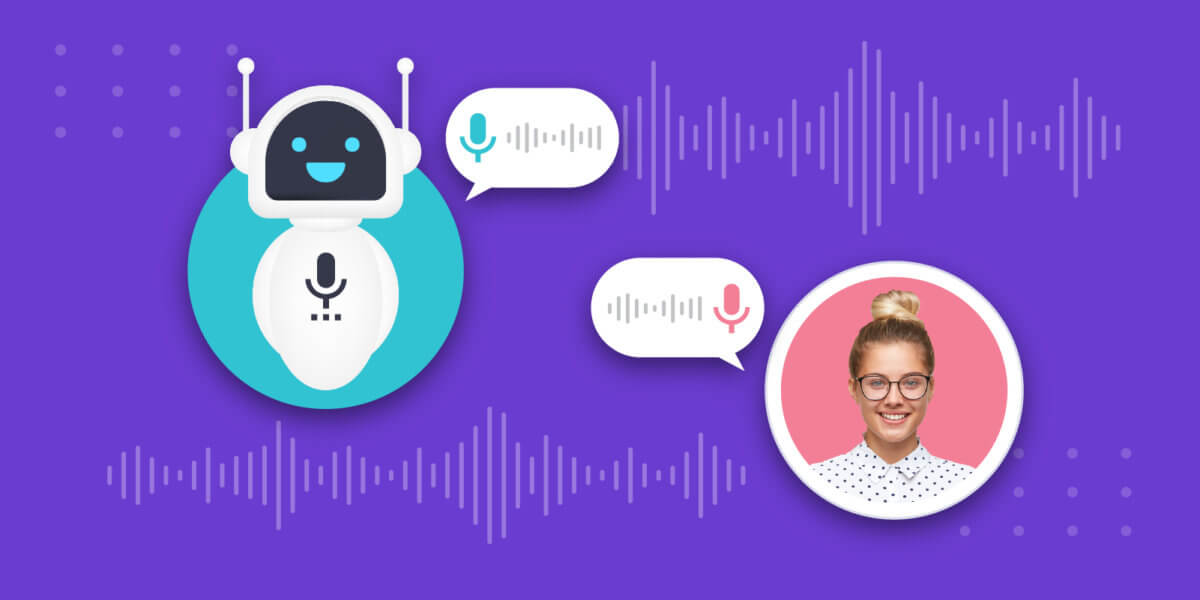Why is Voice AI in Customer Service a Personal Weapon in 2024?

Why is Voice AI in Customer Service a Personal Weapon in 2024?
In the dynamic world of customer service, a groundbreaking tool is taking centre stage: Voice AI (Artificial Intelligence). In 2024, this technology has become a powerful asset for companies, transforming the way they communicate with customers. In this blog, we’ll explore the reasons why Voice AI has become a crucial element in customer service, adding a personal touch to interactions.
Smart assistants, like Alexa and Siri, understand and respond to human speech. They’ve moved beyond personal use and are now improving customer service. This blog will explain how this technology enhances the customer service experience. Let’s begin with the basics.
What is Voice AI?
Voice AI is a leading technology within conversational artificial intelligence. It focuses on imitating human-like voice conversations with customers, allowing businesses to enable voice commands for instructions and inquiries.

A notable feature of voice bots is their hands-free customer experience. Customers can easily interact with websites, such as making purchases, while engaged in other activities. This seamless integration accommodates multitasking without any hassle.
The success of Voice AI has made it a prominent player in the market, with the global voice-based smart speaker market expected to reach $30 billion by the end of 2024.
Before adopting voice bots, it’s important to gain a thorough understanding of the technology for optimal utilisation. This article explores the workings of Voice AI, its benefits for businesses and customers, and the challenges it presents.
Suggest Reading: Transforming Customer Support with Cutting-Edge Voice AI Technology
The Need for Voice Automation in Customer Service
The voicebot revolution is booming, and businesses are swiftly adopting voice AI in customer service. With the pandemic amplifying demands, contact centres & customer service teams are redefining customer interactions, aiming to eliminate hold times, streamline phone trees, and enhance data privacy.
Phone support, despite being the most popular customer support channel, is also one of the most expensive. Businesses globally invest over $1.3 trillion annually in customer calls. Recognizing the potential for improvement, companies are turning to voice automation powered by conversational AI to enhance efficiency, reduce wait times, cut contact centre costs, and ultimately provide a superior phone support experience.
However, transitioning conversational design principles from text-based interactions to voice automation is not a one-size-fits-all endeavour. Voice automation presents unique challenges and considerations that demand careful attention to ensure a seamless and effective customer experience.
Top 10 Advantages of Implementing Voice AI in Business
We’ve explored what Voice AI is and how important it is for businesses, let’s discuss the significant business benefits it offers. However, the potential advantages extend beyond those listed below, as Voice AI presents numerous possibilities for enhancing customer support.
Suggest Reading: Voice AI and Voicebots—A Quick View
1. Efficient Customer Support
Customer support is demanding with tasks like emails, feedback, and FAQs. Voice AI streamlines and automates these tasks, letting employees focus on important human-centric work while voice bots handle the repetitive ones efficiently.
2. Enhanced Customer Experience
Customers appreciate the constant and prompt responses, along with precise query resolutions delivered by voice bots. Voice AI facilitates interaction in customers’ native languages and at their convenience, contributing to an enhanced and tailored customer experience. These features collectively give your organisation a competitive edge and elevate customer satisfaction rates.
3. Personalised and Automated Interactions
Personalisation stands out as a game-changer in customer support. Leveraging historical data, your organisation can deliver tailored responses to each customer. Voice bots effortlessly retrieve information from a database, enabling personalised interactions without any hassle or human intervention. Automating responses once ensures consistent personalization for every customer engaging with your voice bot.
4. Cost Savings in Customer Support
Automating customer support offers cost savings in various ways. Firstly, voice bots resolve a significantly higher number of queries at a low cost. Secondly, deploying chatbots passively boosts customer satisfaction, eliminating the need for acquiring new customers.
Automation also results in substantial time savings by reducing the training & mentoring required for the support agents.
5. Barrier-Free Communication
With AI, businesses create a strong, 24/7 interactive channel using multilingual voice bots. These conversational solutions offer personalised support, acting as a bridge for seamless communication, elevating the overall customer experience.
6. Simplified Data Collection
Voice bots make information gathering easy without delays or friction. They can also collect feedback effortlessly. Once data is gathered, businesses can store it for future reference or forward it to a human agent for complex queries.
7. Efficient Agent-Handoff
A proficiently designed voice bot can discern situations veering out of control and seamlessly transfer them to customer support agents using artificial intelligence. This hand-off process is remarkably smooth, involving the transmission of all prior information to human agents. This ensures a comprehensive understanding, sparing customers from the need to repetitively articulate their issues.
8. Effective Call Deflection
Efficient call deflection, redirecting calls to an alternative channel for less complex cases, is effectively executed with the integration of voice bots. Most customer support calls are automatically addressed and resolved, contributing to a reduction in the average time required to close support tickets. Even calls necessitating human intervention are handled expeditiously, as agents contend with fewer responsibilities and a reduced ticket workload.
9. Higher First-Call Query Resolution
Harnessing the capabilities of artificial intelligence, automation, seamless agent handoff, and barrier-free communication, a significant proportion of queries find resolution during the initial contact. Elevated first-call resolution rates play a pivotal role in enhancing customer satisfaction and retention, ultimately mitigating customer churn over the long term.
10. Accessibility for Differently-Abled Customers
A customer-centric approach is essential, encompassing all segments of customers. Introducing voice bots ensures that visually impaired customers can effortlessly access customer support services. Additionally, visually impaired employees find voice bots invaluable in handling customer support tasks, as the straightforward commands of voice assistants simplify the execution of tasks.
Navigating the Challenges of Voice Automation
While Voice AI holds immense potential, certain challenges persist, requiring careful consideration and advancements in artificial intelligence. Even impeccably designed voice bots may encounter hurdles in delivering consistent outcomes. Here are some key challenges that businesses must navigate when venturing into the realm of Voice AI:
1. Ambient Noise
A notable challenge arises in the recognition of ambient noise, where Voice AI may inadvertently interpret surrounding sounds as part of user-generated voice. This potential confusion can lead to distorted results.
2. Speed of Speech
The speed of speech poses a challenge, particularly when customers speak rapidly, exceeding 200 words per minute. At such speeds, artificial intelligence may struggle to comprehend and process information adequately, affecting response accuracy.
3. Dialects and Pronunciation
Variations in dialects and pronunciation among individuals introduce complexities for Voice AI. High variation or unclear pronunciation may impede the system’s understanding, posing a challenge to seamless interactions.
Despite these challenges, the rapid acceptance of Voice AI by contact centres and customer support teams signals ongoing advancements. Leveraging machine learning techniques becomes crucial for continually refining and enhancing voice functionality from the very outset. As the technology evolves, addressing these challenges will pave the way for more robust and reliable Voice AI applications.
Best Practices to Optimise Voice Automation in Customer Service
In the realm of voice automation for customer service, certain key practices can significantly enhance the efficiency and effectiveness of interactions. Let’s explore these best practices that pave the way for a seamless and customer-centric experience:
1. Understanding Caller Dynamics
Navigating phone interactions requires a deep understanding of caller dynamics. Acknowledge the limited patience of customers during phone engagements and prioritise concise, efficient conversations to meet their expectations.
2. Addressing Information Capture
Verbal information capture presents its own set of challenges. Craft scripts that facilitate smooth data collection while ensuring a positive customer experience. Striking the right balance ensures that obtaining information is efficient and user-friendly.
3. Navigating Unhappy Paths
Prepare for deviations in conversations by anticipating and planning for unexpected queries or issues. A well-prepared Voice AI should gracefully handle such situations, ensuring a seamless customer experience even in less-than-ideal scenarios.
4. Demographic Considerations
Tailor your Voice AI to be inclusive and accessible to a diverse range of callers. Consider demographic variations and ensure that the technology accommodates the needs of different user groups. This adaptability fosters effectiveness and broadens the accessibility of your voice automation system.
Implementing these best practices not only streamlines customer service operations but also positions your Voice AI as a reliable and customer-friendly tool. By understanding caller dynamics, optimising information capture, navigating unexpected scenarios, and considering diverse demographics, businesses can harness the full potential of voice automation in enhancing the customer experience.
Future of Voice AI: Elevating Customer Experiences through AI and Human Collaboration
The synergy between human agents and AI is transforming customer engagement. AI-powered virtual agents, incorporating voice technologies and sentiment analysis, adeptly engage customers, adjusting conversations seamlessly or transitioning to human agents when needed.
Recognizing the value of human involvement in delivering a comprehensive Customer Experience (CX), the next wave of AI solutions focuses on empowering agents. Automating routine tasks through AI virtual agents alleviates agents from repetitive work. In handling more intricate inquiries, AI actively assists agents, providing instant responses and guidance. This collaborative approach ensures a win-win scenario, enhancing customer experiences with precision and speed.
As voice AI becomes increasingly integrated into daily routines, it’s time for businesses to embrace this transformative technology. If you’re seeking to enhance your customer service with artificial intelligence, look no further.
Verloop.io offers a comprehensive solution to elevate customer experiences. With our platform, you can seamlessly incorporate voice AI into your customer service efforts, ensuring optimal results.
Ready to take the next step? Request a demo with our experts to explore conversational tools and voice bots tailored to your business needs. Let us help you gain a competitive edge and deliver exceptional customer experiences.






